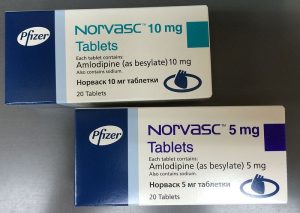“Bicarbonate Supplementation Slows Progression of CKD and Improves Nutritional Status”
J Am Soc Nephrol. 2009 Sep;20(9):2075-84. [free full text]
—
Metabolic acidosis is a common complication of advanced CKD. Some animal models of CKD have suggested that worsening metabolic acidosis is associated with worsening proteinuria, tubulointerstitial fibrosis, and acceleration of decline of renal function. Short-term human studies have demonstrated that bicarbonate administration reduces protein catabolism and that metabolic acidosis is an independent risk factor for acceleration of decline of renal function. However, until this 2009 study by de Brito-Ashurst et al., there were no long-term studies demonstrating the beneficial effects of oral bicarbonate administration on CKD progression and nutritional status.
The study enrolled CKD patients with CrCl 15-30ml/min and plasma bicarbonate 16-20 mEq/L and randomized them to treatment with either sodium bicarbonate 600mg PO TID (with protocolized uptitration to achieve plasma HCO3– ≥ 23 mEq/L) for 2 years, or to routine care. The primary outcomes were: 1) the decline in CrCl at 2 years, 2) “rapid progression of renal failure” (defined as decline of CrCl > 3 ml/min per year), and 3) development of ESRD requiring dialysis. Secondary outcomes included 1) change in dietary protein intake, 2) change in normalized protein nitrogen appearance (nPNA), 3) change in serum albumin, and 4) change in mid-arm muscle circumference.
134 patients were randomized, and baseline characteristics were similar among the two groups. Serum bicarbonate levels increased significantly in the treatment arm. (See Figure 2.) At two years, CrCl decline was 1.88 ml/min in the treatment group vs. 5.93 ml/min in the control group (p < 0.01). Rapid progression of renal failure was noted in 9% of intervention group vs. 45% of the control group (RR 0.15, 95% CI 0.06–0.40, p < 0.0001, NNT = 2.8), and ESRD developed in 6.5% of the intervention group vs. 33% of the control group (RR 0.13, 95% CI 0.04–0.40, p < 0.001; NNT = 3.8). Regarding nutritional status, dietary protein intake increased in the treatment group relative to the control group (p < 0.007). Normalized protein nitrogen appearance decreased in the treatment group and increased in the control group (p < 0.002). Serum albumin increased in the treatment group but was unchanged in the control group, and mean mid-arm muscle circumference increased by 1.5 cm in the intervention group vs. no change in the control group (p < 0.03).
In conclusion, oral bicarbonate supplementation in CKD patients with metabolic acidosis reduces the rate of CrCl decline and progression to ESRD and improves nutritional status. Primarily on the basis of this study, the KDIGO 2012 guidelines for the management of CKD recommend oral bicarbonate supplementation to maintain serum bicarbonate within the normal range (23-29 mEq/L). This is a remarkably cheap and effective intervention. Importantly, the rates of adverse events, particularly worsening hypertension and increasing edema, were unchanged among the two groups. Of note, sodium bicarbonate induces much less volume expansion than a comparable sodium load of sodium chloride.
In their discussion, the authors suggest that their results support the hypothesis of Nath et al. (1985) that “compensatory changes [in the setting of metabolic acidosis] such as increased ammonia production and the resultant complement cascade activation in remnant tubules in the declining renal mass [are] injurious to the tubulointerstitium.” The hypercatabolic state of advanced CKD appears to be mitigated by bicarbonate supplementation. The authors note that “an optimum nutritional status has positive implications on the clinical outcomes of dialysis patients, whereas [protein-energy wasting] is associated with increased morbidity and mortality.”
Limitations to this trial include its open-label, no-placebo design. Also, the applicable population is limited by study exclusion criteria of morbid obesity, overt CHF, and uncontrolled HTN.
Further Reading:
1. Nath et al. “Pathophysiology of chronic tubulo-interstitial disease in rats: Interactions of dietary acid load, ammonia, and complement component-C3” (1985)
2. KDIGO 2012 Clinical Practice Guideline for the Evaluation and Management of Chronic Kidney Disease (see page 89)
3. UpToDate, “Pathogenesis, consequences, and treatment of metabolic acidosis in chronic kidney disease”
